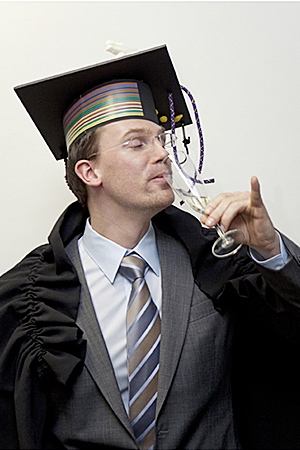Christoph Schmalz
Robust Single Shot Structured Light
Abstract
In this thesis a new robust approach for Single-Shot Structured Light 3D scanning is developed. As the name implies, this measurement principle requires only one image of an object, illuminated with a suitable pattern, to reconstruct the shape and distance of the object. This technique has several advantages. It can be used to record 3D video with a moving sensor or of a moving scene. Since the required hardware is very simple, the sensor can also be easily miniaturized. Single-Shot Structured Light, thus, has the potential to be the basis of a versatile and inexpensive 3D scanner.
One focus of the work is the robustness of the method. Existing approaches are mostly limited to simple scenes, that is, smooth surfaces with neutral color and no external light. In contrast, the proposed method can work with almost any close-range scene and produces reliable range images even for very low-quality input images. An important consideration in this respect is the design of the illumination pattern. We show how suitable color stripe patterns for different applications can be created. A major part of the robustness is also due to the graph-based decoding algorithm for the pattern images. This has several reasons. Firstly, any color assessments are based on ensembles of pixels instead of single pixels. Secondly, disruptions in the observed pattern can be sidestepped by finding alternative paths in the graph. Thirdly, the graph makes it possible to apply inference techniques to get better approximations of the projected colors from the observed colors. For a typical camera resolution of 780×580, the whole decoding and reconstruction algorithm runs at 25Hz on current hardware and generates up to 50000 3D points per frame.
The accuracy of the recovered range data is another important aspect. We implemented a new calibration method for cameras and projectors, which is based on active targets. The calibration accuracy was evaluated using the reprojection error for single camera calibrations as well as the 3D reconstruction errors for complete scanner calibrations. The accuracy with active targets compares favorably to calibration results with classic targets. In a stereo triangulation test, the root-mean-square error could be reduced to a fifth. The accuracy of the combined Structured Light setup of camera and projector was also tested with simulated and real test scenes. For example, using a barbell-shaped reference object, its known length of 80.0057mm could be determined with a mean absolute error of 42µm and a standard deviation of 74µm.
The runtime performance, the robustness and the accuracy of the proposed approach are very competitive in comparison with previously published methods. Finally, endoscopic 3D scanning is a showcase application that is hard to replicate without Single-Shot Structured Light. Building on a miniature sensor head designed by Siemens, we developed calibration algorithms and apply the graph-based pattern decoding to generate high-quality 3D cavity reconstructions.
